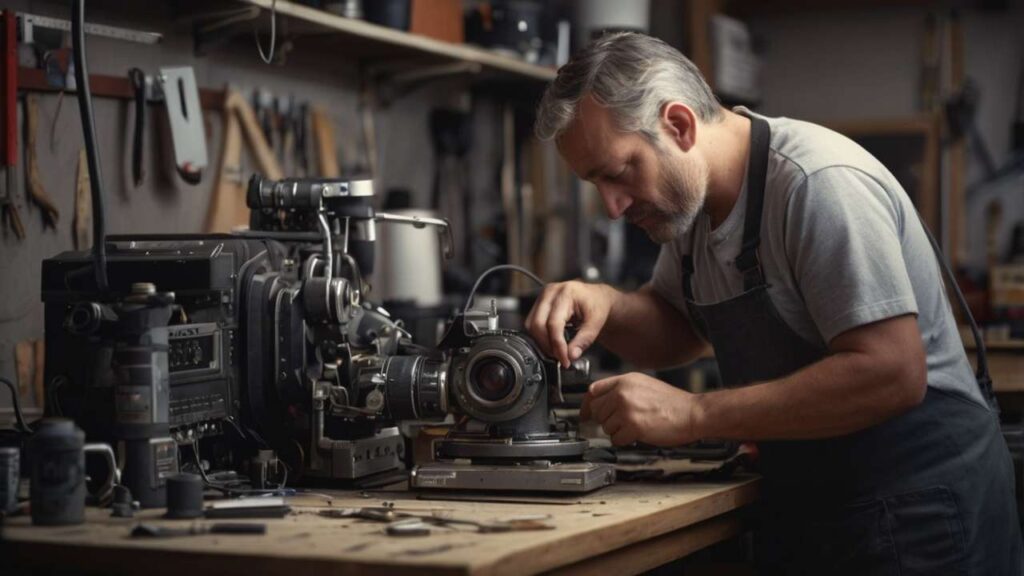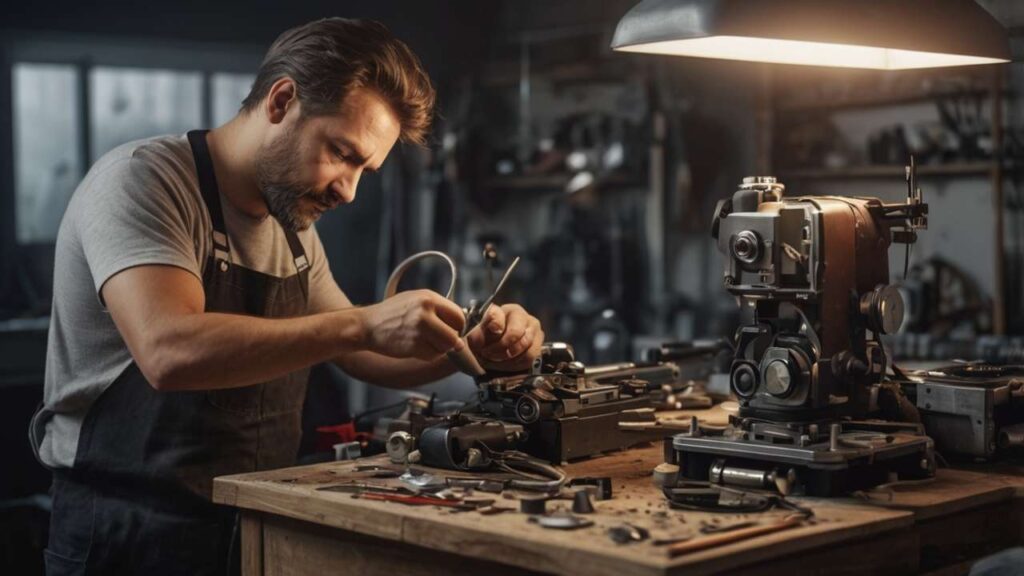It’s amazing how many times people (me included) think a quick do-it-yourself fix will save money, only to realize the damage becomes worse than the original problem. Camera repair is one of those tricky areas where small mistakes can cost hundreds of dollars. In fact, I once tried to clean dust inside a lens using a “cheap toolkit” from an online store, and let’s just say, the outcome was far from professional. The autofocus never worked the same again. That’s why the conversation around DIY vs. professional camera repair is so important—not just for hobbyists but also for working photographers who rely on their gear.
The truth is, simple tasks can be done safely at home, but when the problem goes deeper, calling a trusted, reliable, and expert technician is the smarter path. Having the right screwdriver or cleaning cloth doesn’t magically turn you into a repair specialist. What you need to weigh carefully is cost vs. risk, because sometimes the cheapest route is the most expensive mistake.
The Small Fixes You Can Try Without Fear
There are certain situations where doing it yourself makes sense. Dusting off the exterior of your camera body, swapping batteries, changing out memory cards, or updating the firmware are everyday fixes that don’t require professional hands. I actually keep a soft microfiber cloth and a simple air blower in my camera bag; they’ve saved me countless times during a dusty shoot in Jogja or even when I was by the beach in Gunungkidul.
Firmware updates are another underrated DIY move. Most manufacturers release them to fix bugs or improve performance. Downloading and installing updates is fairly simple if you follow the steps on the brand’s website. These kinds of tasks don’t risk breaking the camera, so if you’re comfortable, go ahead.
But notice how all these tasks don’t involve opening the camera or poking around sensitive areas. That’s where the danger begins.
The Dangerous Side of DIY Repairs
The “don’t-do-it-yourself” list is long, and it includes jobs that even some enthusiasts think they can handle. Let’s be real: disassembling a lens is like playing Jenga with glass. Miss one alignment, and the optics are permanently ruined. Sensor cleaning, too, is high risk. Yes, there are cleaning kits sold online, but a slight misstep and you’ve scratched the heart of the camera.
Experts often warn that circuit board problems or water damage are absolute no-go zones for amateurs. Water intrusion is especially sneaky; corrosion can spread over days or weeks, and without the professional tools to strip, dry, and treat the internals, you’re basically leaving the camera to die slowly.
According to Michael Shaw, a repair specialist with over 20 years of experience, “Half of the cameras I see on my workbench are here because someone tried a DIY fix first. They thought they were saving money, but by the time they hand it over, the repair cost doubles.” His words stuck with me because they match exactly what happened with my lens disaster.
Tools vs. Expertise: Why Professionals Do It Better
It’s tempting to believe that buying a fancy repair kit online will make you capable of fixing your gear. The truth? Tools are only part of the equation. A trusted technician not only has the specialized instruments but also the expertise to diagnose problems accurately.
For example, while you might think a button isn’t working due to dirt, a professional can test the underlying circuits and see if the issue is electronic. In my case, I once thought my camera’s LCD screen was cracked from pressure, but the actual cause was a loose connector ribbon inside. Without the proper tools and knowledge, I would have misdiagnosed it and caused further damage.
That’s why camera repair shops don’t just “fix.” They inspect, test, replace parts with manufacturer-grade spares, and then recalibrate everything to factory settings. This behind-the-lens process is something DIY just can’t replicate. If you’re curious, you can read more about how this is handled in detail here: Behind the Lens: A Look at the Camera Repair Process from Start to Finish.
Cost vs. Risk: The Hidden Price of DIY
Money is always the motivator behind DIY. A simple repair quote can feel outrageous, especially if you’re just a casual shooter. But think of it like this: a $100 service fee is nothing compared to $600 for a replacement body or $1,000 for a new lens.
DIY is often a gamble. You might succeed, but you also might void warranties or create irreversible damage. In the long run, using a professional service is usually the more cost-effective option. Personally, I’ve come to see it less as a cost and more as insurance. You’re paying for peace of mind.
And if you’re in North Carolina, finding a reliable camera repair service is easier than you think. Here’s a resource worth checking out for trusted recommendations in your area.
Beyond the Fix: Preventive Maintenance Matters
One thing often ignored is maintenance. Regular cleaning, checkups, and part inspections can extend the life of your camera more than any single repair. Professionals see the same types of malfunctions every day: sticky buttons from dirt, sensors clogged with dust, loose battery doors, and failing shutter units. Many of these issues could have been prevented with scheduled servicing.
That’s why I now book maintenance once a year, similar to how people take their cars in for oil changes. It’s not about fixing problems; it’s about preventing them. Think of it as an investment in the longevity of your gear.
Case Study: The Wedding Photographer’s Nightmare
A friend of mine, Raka, had his DSLR suddenly shut down in the middle of shooting a wedding. Panic, of course. He thought the battery was the issue and swapped it, but the camera remained dead. Instead of calling a repair service immediately, he Googled tutorials and tried to replace the internal fuse. Long story short—he ended up frying the circuit board. The repair bill? $450.
The wedding gig itself paid him $800, so nearly half his income went to fix something that could have been a $70 service if handled by a pro from the start. This is the kind of real-world example that shows why expertise matters more than bravery with a screwdriver.
Finding the Right Fit: Choosing a Trusted Repair Shop
Not all repair services are equal. Look for shops that are authorized, use manufacturer parts, and provide warranties on their work. Ask about turnaround times too, because nothing is worse than missing a once-in-a-lifetime shoot while your camera sits on a dusty shelf.
Reputation also matters. Read reviews, check local forums, and don’t hesitate to ask for examples of past repairs. If you’re in North Carolina, this trusted list of top-quality camera repair services is a great starting point.
Additional Angles for Camera Owners
As camera technology evolves, so do the repair challenges. Topics like “How to Handle Mirrorless Camera Failures,” “The Rise of Mobile Phone Camera Repairs,” and even “Insurance vs. Repair: What’s Best for Photographers?” are becoming highly relevant. Exploring these areas gives photographers not just reactive solutions but also proactive strategies.
The future of camera repair content should cover not only the fixes but also broader insights: how spare parts are sourced, the role of refurbished gear, and even eco-friendly disposal of damaged components. These aren’t just lists of ideas—they’re natural extensions of what every photographer wants: reliable gear that won’t let them down.
FAQs
Q1: Is it safe to clean my camera sensor at home?
It’s possible, but very risky. One wrong move can scratch the sensor permanently. Professionals use specialized equipment in controlled environments, which is why this job is better left to them.
Q2: How often should I take my camera for professional maintenance?
Once a year is a safe schedule, though heavy users like wedding or sports photographers might benefit from checkups every six months.
Q3: Are third-party repair shops as good as manufacturer services?
Some are. The key is choosing trusted, reliable experts who use high-quality parts and provide warranties. Manufacturer services are usually safest, but well-reviewed independents can be just as effective.
At the end of the day, the decision between DIY and professional repair boils down to knowing your limits. Small fixes are fine, but when the issue touches the camera’s core, calling a pro is the smartest move. Remember: tools are cheap, but expertise is priceless.
If this article gave you something useful, I’d appreciate it if you hit the share buttons below and spread it with fellow photographers. Who knows, maybe you’ll save someone from making the same expensive mistakes I once made.


